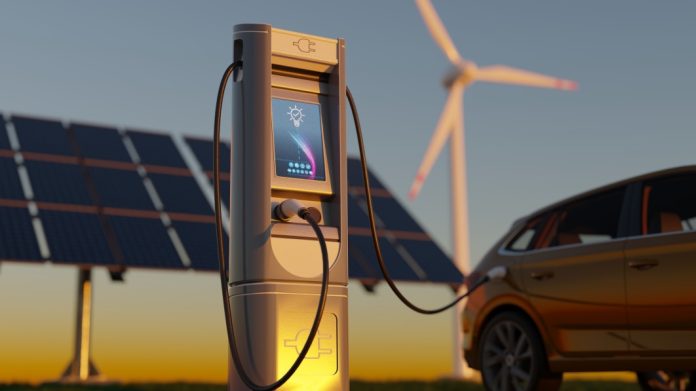Last month, the International Energy Agency (IEA) released its second Net Zero Roadmap report, presenting a plan for the global economy to achieve the objectives of the Paris Agreement. Unlike its previous reports that focused more on data analysis, this roadmap offers a more forward-looking perspective. Although the report indicates no immediate progress in reducing emissions, it does highlight the positive growth of clean energy. As the authors state in the introduction, “The path to 1.5 degrees C has narrowed, but clean energy growth is keeping it open.”
Driving the growth of clean energy are what the IEA refers to as “mass manufactured technologies,” such as solar photovoltaics, electric cars, residential heat pumps, and stationary battery storage. These products benefit from standardized production processes and short lead times, allowing for mass production and continual improvement.
An impressive example of this growth is the expansion of solar photovoltaics, which has added as much capacity between 2015 and 2022 as all of Europe’s installed power generation. Additionally, sales of heat pumps have reached a level equivalent to the entire residential heating capacity in Russia.
Remarkable Milestones
While these milestones are remarkable in the energy sector, it is essential to put them into context by comparing them to other industries and historical periods. This year, the IEA provides useful comparisons by juxtaposing EV batteries, solar modules, and wind turbines with three innovative technologies of the past: US aircraft during World War II, the Ford Model T from 1910 to 1920, and gas turbine generators from 1970 to 1980.
The report assesses these groups based on two factors: the average annual increase in deployment and the decline in annual costs during their respective key decades. The findings are informative but complex.
For example, EV batteries show favorable growth compared to the rapid expansion of US aircraft during WWII. Solar modules grew at a faster pace from 2010 to 2020 than gas turbines did in the 1970s, but not as rapidly as Model T sales expanded in the early 20th century. Onshore wind grew at a similar rate to gas turbines, while offshore wind experienced slightly faster growth.
Solar Technologies Outperforming
In terms of cost reduction, batteries and solar technologies outperform their historical counterparts. Battery costs decreased by almost 20% annually on average in the previous decade, with solar costs not far behind. In contrast, US aircraft costs fell by approximately 15% per year, slower than solar or batteries, and Model T costs declined by about 10% annually from 1910 to 1920. In comparison, wind technologies align closely with the historical gas turbine market.
These comparisons should inspire those advocating for greater deployment of mass manufactured technologies. These technologies are already on a trajectory of transformative growth similar to innovations that reshaped society 80 to 100 years ago, both in terms of mobility and wartime capabilities.
The Challenges we are Facing
However, there are challenges that could hinder achieving the goal of net zero greenhouse gas emissions. One such challenge is to continue innovating while driving down the costs of solar and batteries. These have to be completed while also achieving even higher levels of annual deployment.
Fortunately, IEA data suggests batteries and solar will experience average annual growth rates of 72% and 39%. (Bloomberg NEF’s).
However, wind technologies lag behind with a compound growth rate of only 3%.
The IEA warns that much more needs to be done to address these challenges.
One significant obstacle is the longevity of existing energy systems. Whether it be cars with a life span of more than a decade, or thermal power plants with lifespans of 30 to 50 years. As the authors explain, “The slow turnover rate of energy related equipment means there is a considerable delay between a technology becoming dominant in new deployments and that technology becoming dominant in the overall operating stock.”
In light of this, two factors must prevail. Firstly, the increase in installations of new technologies must gradually replace incumbent systems as their retirement becomes necessary. Secondly, effective policies need to be implemented, favoring both the deployment of necessary technologies and the retirement of outdated ones.
The market and policy makers should embrace the logic of mass standardized technologies in their own unique ways. They must come together ultimately working towards the same end goal, the growth of clean energy.
